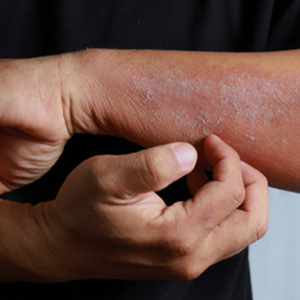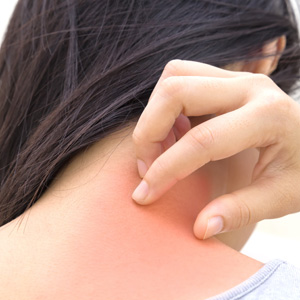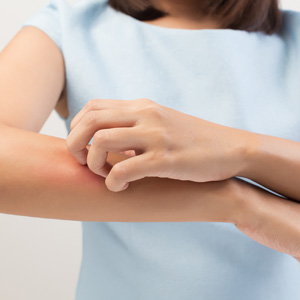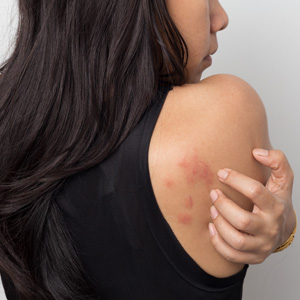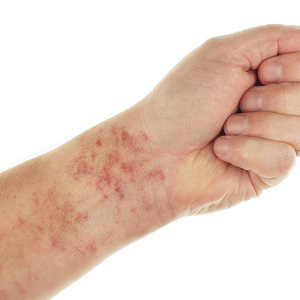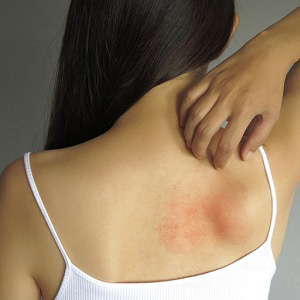Rashes are a common problem experienced by most of us at some point in time. A rash can affect the skin in a number of ways. Some may experience a rash as diffuse redness with small bumps, numerous “pinprick” red spots, as hives, or even as blisters. A rash may cause a warm sensation, dryness, swelling, itching, and pain. To say one has a rash is simply to say that irritation and inflammation are present on the skin.
A rash may come from contact with an allergen or irritant, fungus or virus, or may result from an autoimmune response in the body. While many rashes are temporary and mild, there are times in which dermatologic treatment is necessary to relieve the symptoms.
Contact dermatitis is a type of rash that comes from exposure to a chemical or food to which an allergy has developed. Common triggers for contact dermatitis include detergents and soaps, perfumes, makeup, chemicals used in the home or workplace, and plants such as poison ivy. In some instances of contact dermatitis, skin testing may be recommended to rule out potential triggers.
Contact dermatitis may be allergic or irritant in nature. Irritant contact dermatitis develops as a result of exposure to some type of chemical that causes direct irritation and inflammation rather than an allergic response.
Sometimes a rash occurs as a response to medication. In fact, common medications such as those for high cholesterol and blood pressure or antibiotics carry the risk of rash as a side effect.
Fungal conditions such as athlete’s foot or ringworm are common triggers of rashes.
Rashes that form from some type of virus include shingles, chicken pox, or herpes. Pityriasis rosea is a type of rash that appears as a symptom of a viral illness.
Bacteria may also lead to rashes that look like patches, crusted skin, or pustules.
Certain autoimmune diseases can affect the skin by eliciting an abnormal immune response in the body. Conditions such as lupus, psoriasis, and eczema, all of which can be exacerbated by sun exposure, have no cure but can be managed with dermatologic care.
Rarely, a rash may be a sign of skin cancer such as squamous cell or basal cell carcinoma or lymphoma. This type of rash would look like scaly pink patches of skin.
Because it is difficult to distinguish the cause of a rash, dermatologic care is important for any rash that does not clear up naturally within days.
Treatment for a rash will depend on a variety of factors. The first step in treating a rash is determining its cause, which we do by analyzing the appearance of the skin and discussing potential exposure to a trigger. We will also look at other symptoms and the presence of a rash in any other family members or co-workers. Factors aside from these that are important to make an accurate diagnosis include the area or areas affected, where the rash originated and where it spread to, the speed and pattern in which a rash developed, and the sensation that accompanies a rash. Sometimes a skin biopsy is recommended to help us determine the cause of a rash.
If you are experiencing a concerning rash, we can help. Contact the Dermatology and Cosmetic Laser Center of Huntington for excellent dermatologic care.














